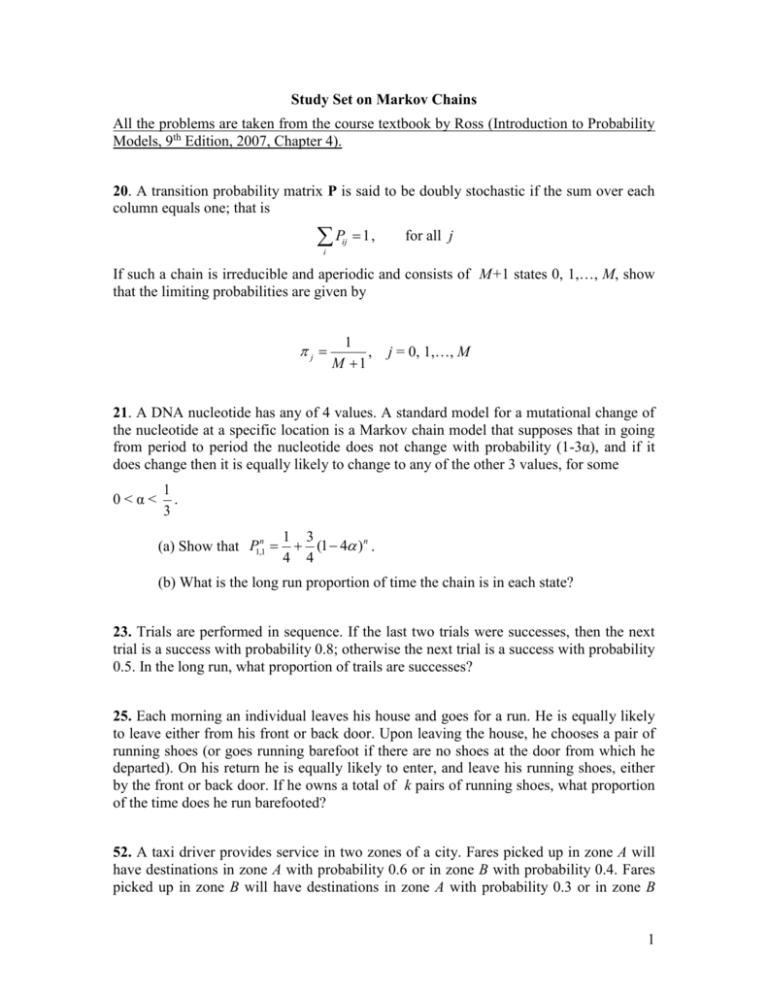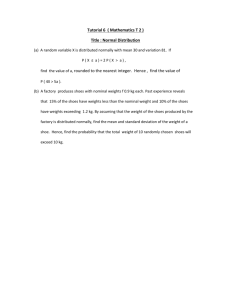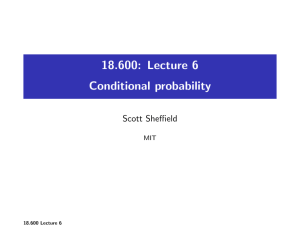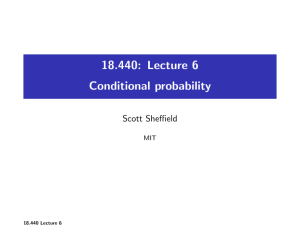MC Study Set.
advertisement

Study Set on Markov Chains All the problems are taken from the course textbook by Ross (Introduction to Probability Models, 9th Edition, 2007, Chapter 4). 20. A transition probability matrix P is said to be doubly stochastic if the sum over each column equals one; that is P ij 1, for all j i If such a chain is irreducible and aperiodic and consists of M+1 states 0, 1,…, M, show that the limiting probabilities are given by j 1 , M 1 j = 0, 1,…, M 21. A DNA nucleotide has any of 4 values. A standard model for a mutational change of the nucleotide at a specific location is a Markov chain model that supposes that in going from period to period the nucleotide does not change with probability (1-3α), and if it does change then it is equally likely to change to any of the other 3 values, for some 0<α< 1 . 3 (a) Show that P1,1n 1 3 (1 4 ) n . 4 4 (b) What is the long run proportion of time the chain is in each state? 23. Trials are performed in sequence. If the last two trials were successes, then the next trial is a success with probability 0.8; otherwise the next trial is a success with probability 0.5. In the long run, what proportion of trails are successes? 25. Each morning an individual leaves his house and goes for a run. He is equally likely to leave either from his front or back door. Upon leaving the house, he chooses a pair of running shoes (or goes running barefoot if there are no shoes at the door from which he departed). On his return he is equally likely to enter, and leave his running shoes, either by the front or back door. If he owns a total of k pairs of running shoes, what proportion of the time does he run barefooted? 52. A taxi driver provides service in two zones of a city. Fares picked up in zone A will have destinations in zone A with probability 0.6 or in zone B with probability 0.4. Fares picked up in zone B will have destinations in zone A with probability 0.3 or in zone B 1 with probability 0.7. The driver’s expected profit for a trip entirely in zone A is 6; for a trip entirely in zone B is 8; and for a trip that involves both zones is 12. Find the taxi driver’s average profit per trip? 62. In Exercise 21, (a) What is the expected number of steps the particle takes to return to the starting position? (b) What is the probability that all other positions are visited before the particle returns to its starting position? 2






